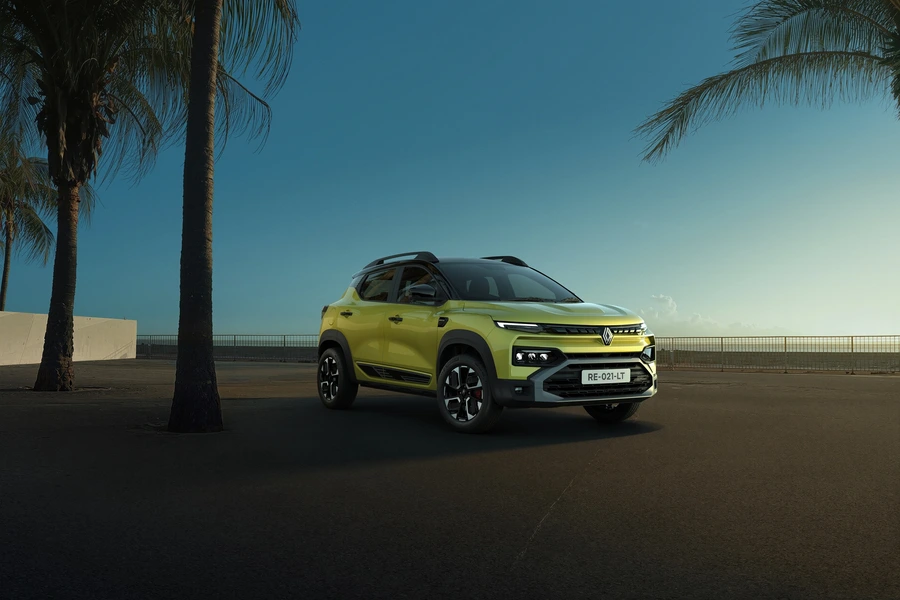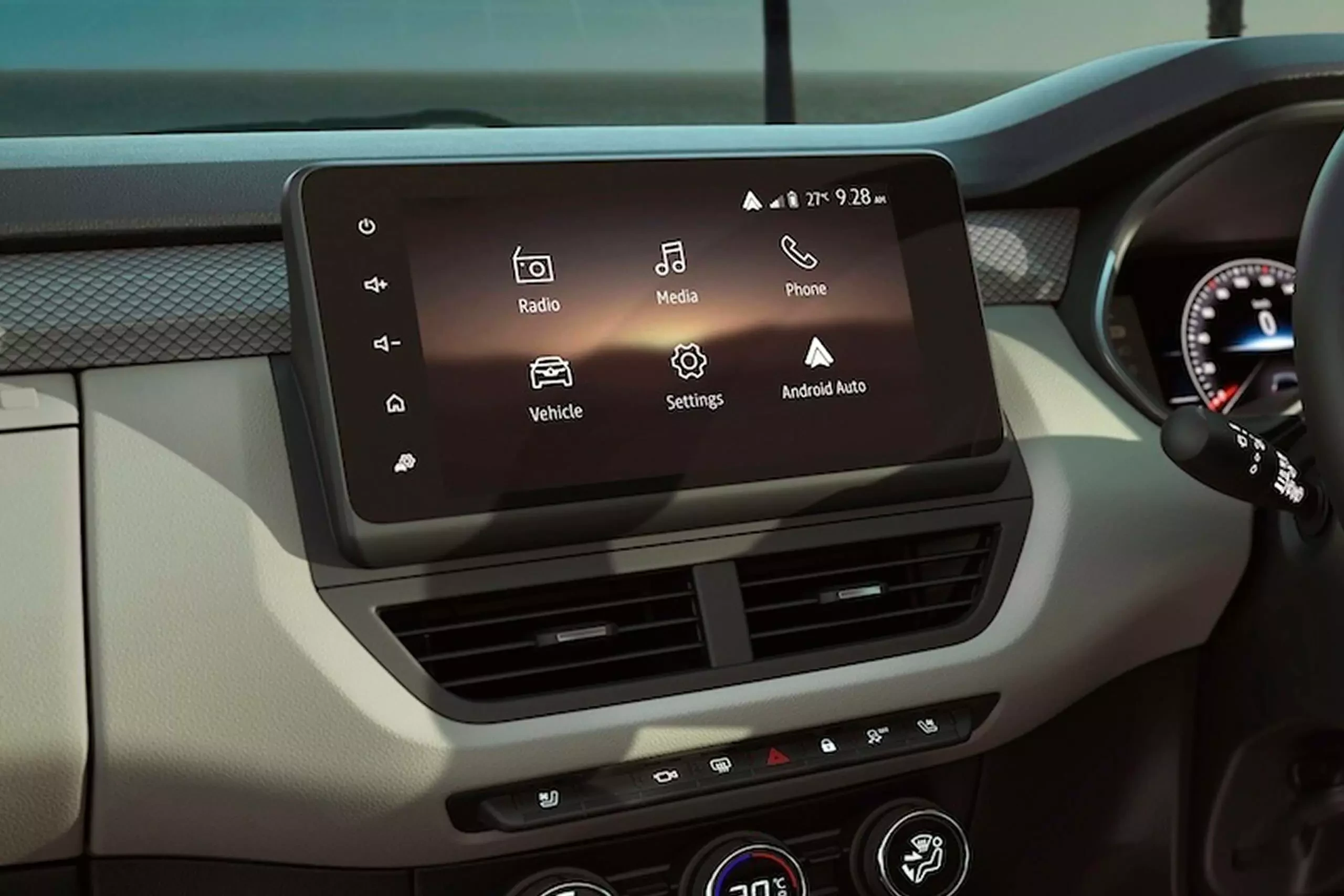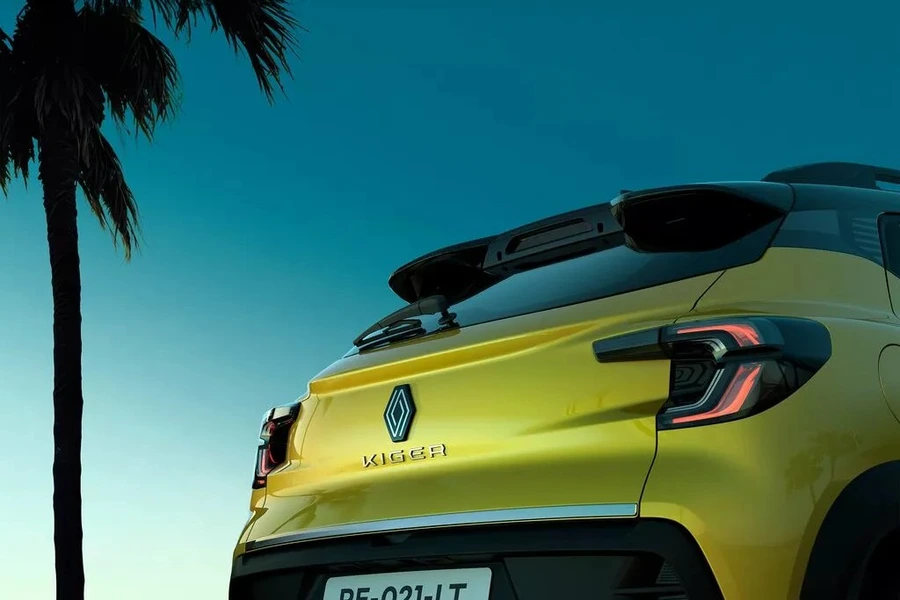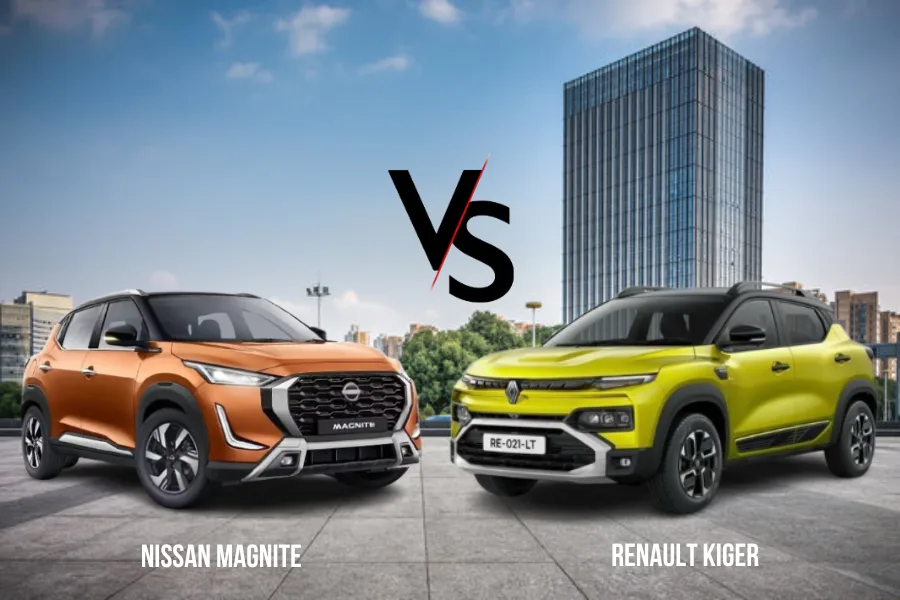Turbo-Turbo on the wall, which is the most exciting of them all? The compact SUV space has had some new entrants, and this time it’s the Renault Kiger vs Nissan Magnite. On one side, the Renault Kiger comes in with newer styling, large boot space and a punchy 1.0-litre turbo that promises fun behind the wheel. On the other, the Nissan Magnite also packs a 1.0-litre turbo and proven Japanese reliability. Both are gunning for the same young, style conscious buyer. But when it comes to outright performance and value, which of these turbo twins deserves the crown?
Renault Kiger vs Nissan Magnite – Exterior Design
When it comes to looks, the Renault Kiger vs Nissan Magnite battle is all about two different design ideas but spawned from the same platform. The Kiger facelift gets a bolder new front fascia with a reshaped bumper, revised headlamp setup, silver skid plate accents and sporty looking 16-inch alloys. Its stance is upright and very SUV like, measuring 3,991 mm in length, 1,750 mm in width and 1,605 mm in height, with a commendable 205 mm ground clearance and a 2,500 mm wheelbase.
The Magnite, in contrast, has always leaned more towards sharp and mature styling. Its large chrome outlined grille, thin LED DRLs, dual-tone body shades and diamond-cut alloys make it look sportier. Slightly longer at 3,994 mm and a touch wider at 1,758 mm, it sits lower at 1,572 mm, which gives it a sleeker stance. The ground clearance, however, remains identical at 205 mm. In essence, the Kiger looks chunkier and SUV-like, while the Magnite plays the stylish, leaner crossover card.
Renault Kiger vs Nissan Magnite – Interior Design and Features
Step inside and the Renault Kiger vs Nissan Magnite story takes another turn. The Kiger’s cabin feels light and airy with a dual-tone black and grey layout, a new 8-inch floating touchscreen, 7-inch digital instrument cluster, wireless smartphone connectivity, and plenty of practical touches. The facelift also brings in ventilated front seats, a wireless charger, 360-degree camera, Arkamys-tuned audio and leatherette upholstery on higher trims. Most importantly, it offers a massive 405-litre boot capacity and 29-litres of in cabin storage. Touches like “Belongings Take Away” alert, which reminds users not to leave items behind in the car give it a slight edge.
The Magnite, meanwhile, gets a darker black-and-tan cabin theme accented by silver bits. It gets an 8-inch infotainment screen, digital cluster, wireless Android Auto/Apple CarPlay, a 6-speaker JBL audio setup in top trims, rear AC vents, 360-degree camera. Boot space, though, is smaller at 336 litres. While features like wireless charging are optional accessories, whereas on the Kiger it comes standard on the higher variants. The Magnite also misses out on ventilated front seats.
Renault Kiger vs Nissan Magnite – Safety Features
The facelifted Renault Kiger has received a significant safety upgrade, now offering 21 standard features across all variants. These include six airbags (front, side, and curtain), Electronic Stability Program (ESP), Traction Control, Hill Start Assist, ISOFIX child seat mounts, and three-point seat belts for every occupant. Higher trims further add a tyre pressure monitoring system (TPMS), pedestrian protection measures, and a “Take-a-Break” reminder for driver fatigue management. The SUV continues to sit on the same platform as its predecessor, carrying a 4-star Global NCAP safety rating.
In comparison, the Nissan Magnite is equipped with a very similar set of safety technologies, including six airbags, ESP, Traction Control, Hill Start Assist, ISOFIX child seat mounts, three-point seat belts, and TPMS. However, in the Renault Kiger vs Nissan Magnite safety debate, the Magnite gains an edge on paper with its 5-star Global NCAP rating.
Renault Kiger vs Nissan Magnite – Power and Drivetrain
Under the hood, the Renault Kiger vs Nissan Magnite comparison shows that both share the same heart as they are based on the same Renault-Nissan CMF-A+ platform. There are two engines on offer, a 1.0-litre naturally aspirated petrol making 72hp and 96Nm, paired with a 5-speed manual or AMT. The real fun comes with the 1.0-litre turbo-petrol, producing 100hp and up to 160Nm of torque, offered with either a 5-speed manual or CVT gearbox. Performance figures as seen is identical on paper. Both these SUVs also get an option of factory-fitted CNG kits on the naturally aspirated manual variants.
Renault Kiger vs Nissan Magnite – Pricing and Verdict
The new Renault Kiger facelift is priced between ₹6.29 lakh and ₹11.29 lakh, while the Nissan Magnite undercuts it at the entry point, starting at ₹6.14 lakh and stretching to ₹11.76 lakh for the top variant. So, while the Magnite gives you a slightly cheaper entry level pricing, the Kiger makes its case with fresher styling, more cabin features like ventilated seats, and a bigger, more practical boot at a lower top-end pricing.

